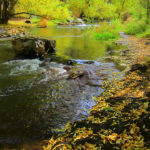
| by Dr. John L. Crompton, Distinguished Professor of Recreation, Park and Tourism Sciences Regents Professor Texas A&M University.
Published by: National Recreation and Park Association Date: 2010 Dr. John Crompton, the distinguished figure in the field of recreation and parks, published an interesting monograph titled “Measuring the Economic Impact of Park and Recreation Services”, which was published by the National Recreation and Park Association as part of a series of studies conducted to examine the benefits of parks. Executive Summary: Tourism depends on attractions. Rarely do people travel because they enjoy the car or airplane ride or because they want to stay in a particular hotel or dine at a restaurant in a different city. The desire to go to another place is stimulated by attractions. In most communities, primary attractions are sports tournaments, festivals, parks, and major recreation facilities operated by park and recreation departments. However, most stakeholders remain unaware of park and recreation departments’ role in tourism. Park and recreation departments frequently are viewed as relatively high-cost centers in cities’ annual budgets because operational costs exceed revenues. However, this narrow perspective is incomplete because it fails to recognize that money invested in park and recreation department services does not belong to the city council, rather it belongs to the city’s residents. The purpose of economic impact studies is to measure the economic return that residents (rather than the city council) receive on their investments. For example, a representative illustration in this monograph shows that residents in a city who invested $24 million in a new sports facility will get their money back on this investment in approximately 13 years from income they receive as a consequence of spending by visitors attracted to the community by that facility. This monograph provides a hands-on guide for professionals so they can do economic impact studies that measure the economic return residents receive on park and recreation department investments. These studies are relatively simple to do, and they do not require hiring external consultants. Park and recreation department personnel can do these studies in house at nominal cost in time and resources. A one-page questionnaire used to collect the data is provided. Examples of how to effectively present the information to stakeholders are given. The economic impact of visitor spending is estimated by the formula: number of visitors x average spending per visitor x multiplier. This formula indicates there are four steps involved: (1) define who qualifies as a visitor; (2) estimate the number of visitors attracted to the community by the park and recreation event or facility; (3) estimate the average level of spending of visitors in the local area; and (4) determine the ripple effects of this new money through the community by applying appropriate multipliers. The monograph guides professionals through these stages. Economic impact studies are used widely in contexts such as economic development, tourism, housing development, and professional sports stadia. Unfortunately, there has been a growing tendency to adopt inappropriate procedures and assumptions in many of these studies to generate high economic impact numbers that “legitimize” a particular advocacy position. These failings are discussed in the monograph and direction on how to avoid them is presented. The numbers emerging from an economic impact study represent only the gross economic impact. However, community stakeholders are likely to be more concerned with net economic benefit, meaning that costs associated with the facility and event must be identified and deducted. The four types of costs and the nature and implications of each are described: event costs, infrastructure costs, displacement costs, and opportunity costs. Finally, the monograph reports the results of more than 100 economic impact analyses undertaken by the author’s research team in the past decade at sports tournaments, special events, recreation facilities, and park facilities. Patterns in these results that illustrate generalizable principles are described. The economic impact of events and facilities will differ widely because of differences in local contexts. Nevertheless, in communities where managers have no empirical data but are required by stakeholders to give estimates of visitors’ expenditures and economic impact, the results of these case studies suggest parameters for providing “intelligent guesses.” This report may also be found online at: www.nrpa.org |



